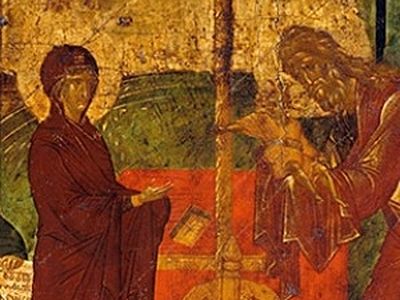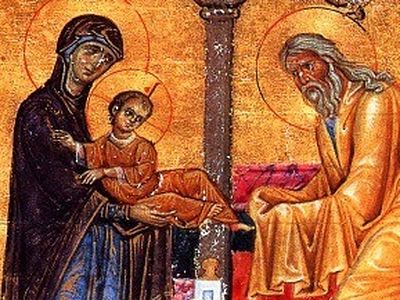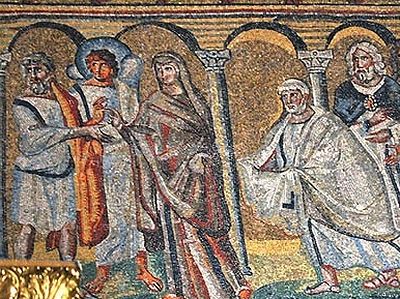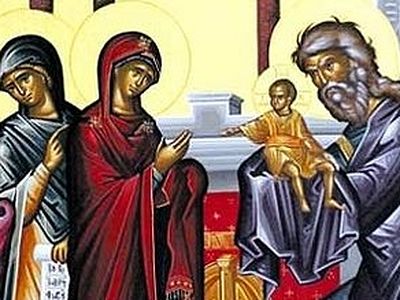SOURCE: Mystagogy. The Weblog Of John Sanidopoulos
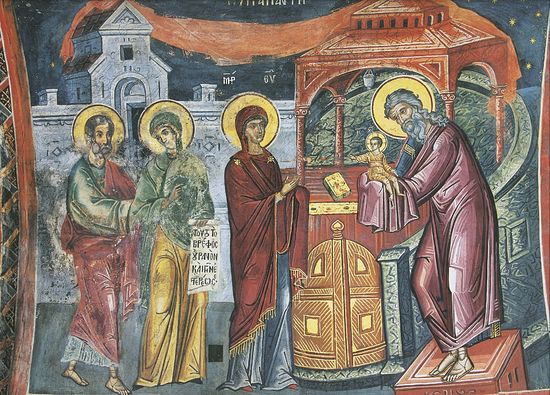 The Meeting of the Lord; XVI century. Greece. Mount Athos, monastery Dionysiou
The Meeting of the Lord; XVI century. Greece. Mount Athos, monastery Dionysiou
The original Greek of Luke 2:22 reads:
"Kαι οτε επλησθησαν αι ημεραι του καθαρισμου αυτων κατα τον νομον μωυσεως ανηγαγον αυτον εις ιεροσολυμα παραστησαι τω κυριω...."
The King James Version translates this verse as follows:
"And when the days of her purification according to the law of Moses were accomplished, they brought him to Jerusalem, to present him to the Lord;..."
We see here that the KJV erroneously translates this verse to read "days of her purification". However, a puristic translation of the text would be translated as "days of their purification".
It is well known that the KJV makes these "errors" often whenever references to doctrines about Mary are conveyed in the Gospels, but this is one of those verses that if mistranslated has tremendous implications; the Theotokos has no need of purification. Rather this passage refers to the Jews and what the Law of Moses prescribed for them.
The Venerable Bede commenting on this passage writes:
"The firstborn of all the male sex was to be called holy to the Lord (Lev. 12:1-6). The Virgin did not receive seed, but even as our Lord willed to be under the Law, so that He might redeem us (Gal. 4:4-5), so too did the blessed Mother, who by a singular privilege was above the Law; nevertheless, she did not shun being made subject to the principles of the Law for the sake of showing us an example of humility" (Homily on the Feast of the Purification).


